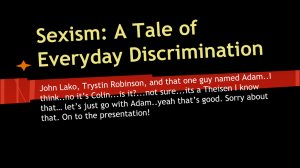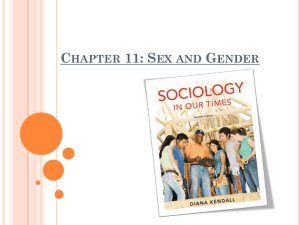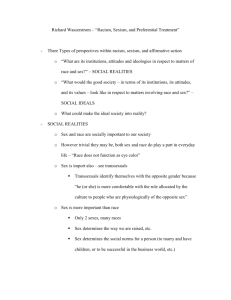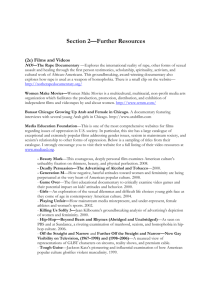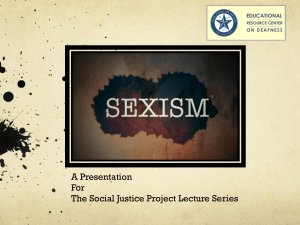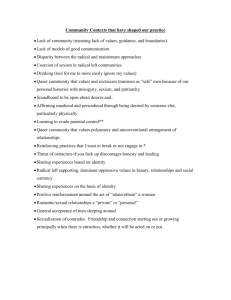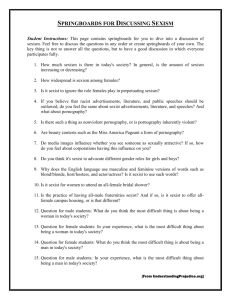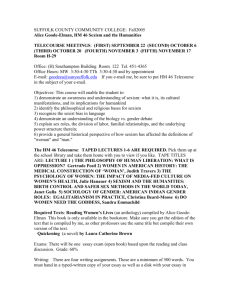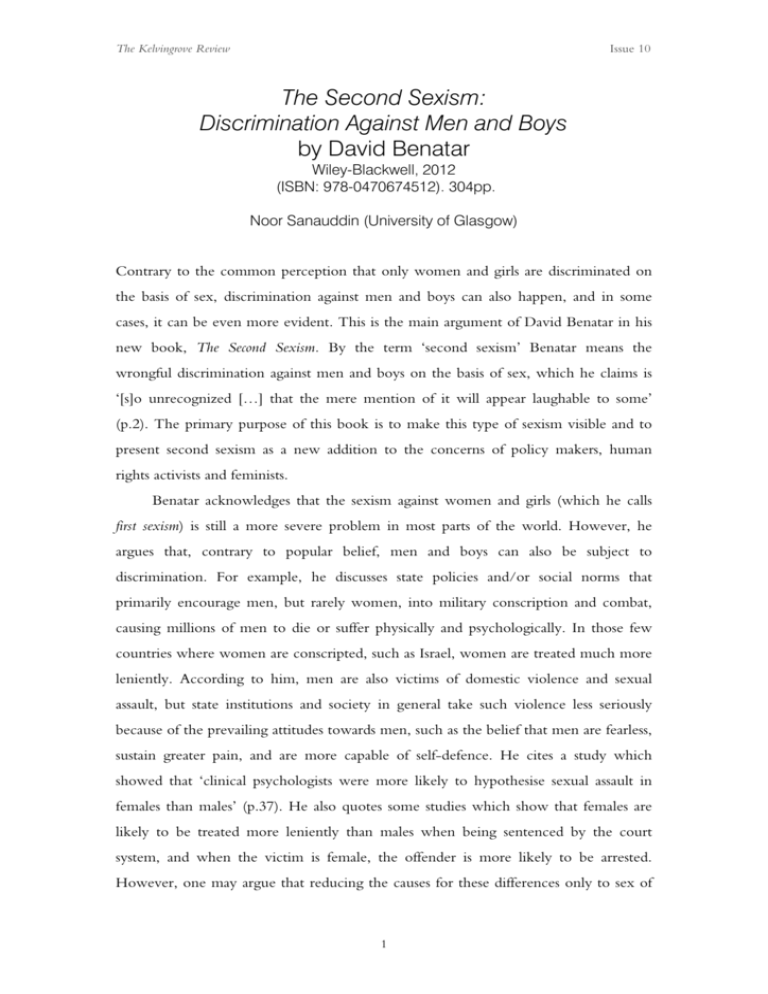
The Kelvingrove Review
Issue 10
The Second Sexism:
Discrimination Against Men and Boys
by David Benatar
Wiley-Blackwell, 2012
(ISBN: 978-0470674512). 304pp.
Noor Sanauddin (University of Glasgow)
Contrary to the common perception that only women and girls are discriminated on
the basis of sex, discrimination against men and boys can also happen, and in some
cases, it can be even more evident. This is the main argument of David Benatar in his
new book, The Second Sexism. By the term ‘second sexism’ Benatar means the
wrongful discrimination against men and boys on the basis of sex, which he claims is
‘[s]o unrecognized […] that the mere mention of it will appear laughable to some’
(p.2). The primary purpose of this book is to make this type of sexism visible and to
present second sexism as a new addition to the concerns of policy makers, human
rights activists and feminists.
Benatar acknowledges that the sexism against women and girls (which he calls
first sexism) is still a more severe problem in most parts of the world. However, he
argues that, contrary to popular belief, men and boys can also be subject to
discrimination. For example, he discusses state policies and/or social norms that
primarily encourage men, but rarely women, into military conscription and combat,
causing millions of men to die or suffer physically and psychologically. In those few
countries where women are conscripted, such as Israel, women are treated much more
leniently. According to him, men are also victims of domestic violence and sexual
assault, but state institutions and society in general take such violence less seriously
because of the prevailing attitudes towards men, such as the belief that men are fearless,
sustain greater pain, and are more capable of self-defence. He cites a study which
showed that ‘clinical psychologists were more likely to hypothesise sexual assault in
females than males’ (p.37). He also quotes some studies which show that females are
likely to be treated more leniently than males when being sentenced by the court
system, and when the victim is female, the offender is more likely to be arrested.
However, one may argue that reducing the causes for these differences only to sex of
1
The Kelvingrove Review
Issue 10
the victim/offender is misleading, because many other variables such as age, colour,
ethnicity, history of prior offenses, and the severity of the crime also influence arrest
and sentence system. Benatar argues that sexual assault is underreported in case of both
sexes; but the reporting rate is even lower when the victim is male, and if reported,
people are less sympathetic to male victims. A study on sexual harassment in the US
prison system found that ‘the sexual coercion incidence rate for males was 22%, while
for females it was 7%’ (p.39). However, one may object that often men themselves are
perpetrators of sexual assault on males, not females.
Benatar notes that in developed countries of the west, boys also face increasing
educational disadvantages: they drop out of schools at higher rates than girls, and are
less likely to be educated to degree level. This leads Benatar to argue that ‘[i]f the sexes
in these statistics were reversed, feminists would take this to be evidence of overall
female disadvantage’ (p.49). Other examples of second sexism the author discusses
include male disadvantage in terms of child custody in divorce cases, paternity leave,
and the shorter life expectancy of men as compared to women.
But do these various disadvantages amount to sexism against men and boys?
Though the author should be credited for bringing into the limelight some
disadvantages of being a male, to call these disadvantages second sexism would imply
that women are responsible for discrimination against men, which is often not the case.
It is an accepted academic stand that sexism is systematic and structural, and that it
involves the subordination of one group as a whole by another group which enjoys
power and advantage in the system. Sexism occurs in the context of a specific set of
institutional arrangements and a specific ideology which creates and maintains a system
in which political, economic and social power is concentrated in the hands of males
(Wasserstrom 1997). Similarly, the well-known feminist theorist Marilyn Frye believes
that ‘the locus of sexism is primarily in the system and framework, not in the particular
act’ (1983, p.19). Furthermore, it is also true that men themselves seem to be
responsible for discrimination against men in most of the examples cited by Benatar.
Benatar has pre-emptively tried to answer these objections by saying that (1)
discrimination need not reach the systematic level in order for it to constitute sexism,
and (2) neither all men are in power nor does it really matter who the perpetrators are.
However, one may ask Benatar: who is responsible for second sexism – the system or
2
The Kelvingrove Review
Issue 10
individuals? Benatar seems to have no clear answer. He diffuses the responsibility for
the second sexism inconsistently across these two sources. Benatar never fully answers
the charge that it is the patriarchal system itself which places extra responsibilities on
the male, and it may be the price that some men are paying for their overall
advantageous position in society. Owing to the controversial nature of the topic, the
author has yet to answer a number of counterarguments. However, one must agree
with him that the overall greater severity of the first sexism does not imply that the
second sexism should be denied, ignored or tolerated.
The main strength of the book lies in being the first systematic attempt to point
out the so far neglected aspects of discrimination against men and boys in its different
forms. From its title the book may look to be part of a backlash against feminism, but it
could function as both a complement and a supplement to feminist objectives. There is
certainly much in the book that feminists would find to their benefit. For example, the
author rejects biological determinism and social conservatism which has been the target
of feminist writings since its beginning. In fact, Benatar calls for an alliance between
feminists and men’s rights activists to work together to combat all forms of sexism (first
and second) against all types of victims. Like Beauvoir’s book The Second Sex, Benatar’s
Second Sexism has the potential of becoming a classic in gender studies. Though
students of social sciences, particularly of sociology, anthropology and gender studies,
are not obliged to agree with the arguments presented by the author; they are certainly
encouraged to read the book.
Bibliography
Frye, Marilyn.1983. The Politics of Reality: Essays in Feminist Theory. Freedom, CA: The
Crossing Press.
Wasserstrom, Richard. 1997. On Racism and Sexism. In C. Gould (ed.), Gender.
Atlantic Highlands, NJ: Humanities Press, pp.337-358.
The Kelvingrove Review
www.gla.ac.uk/tkr
3

